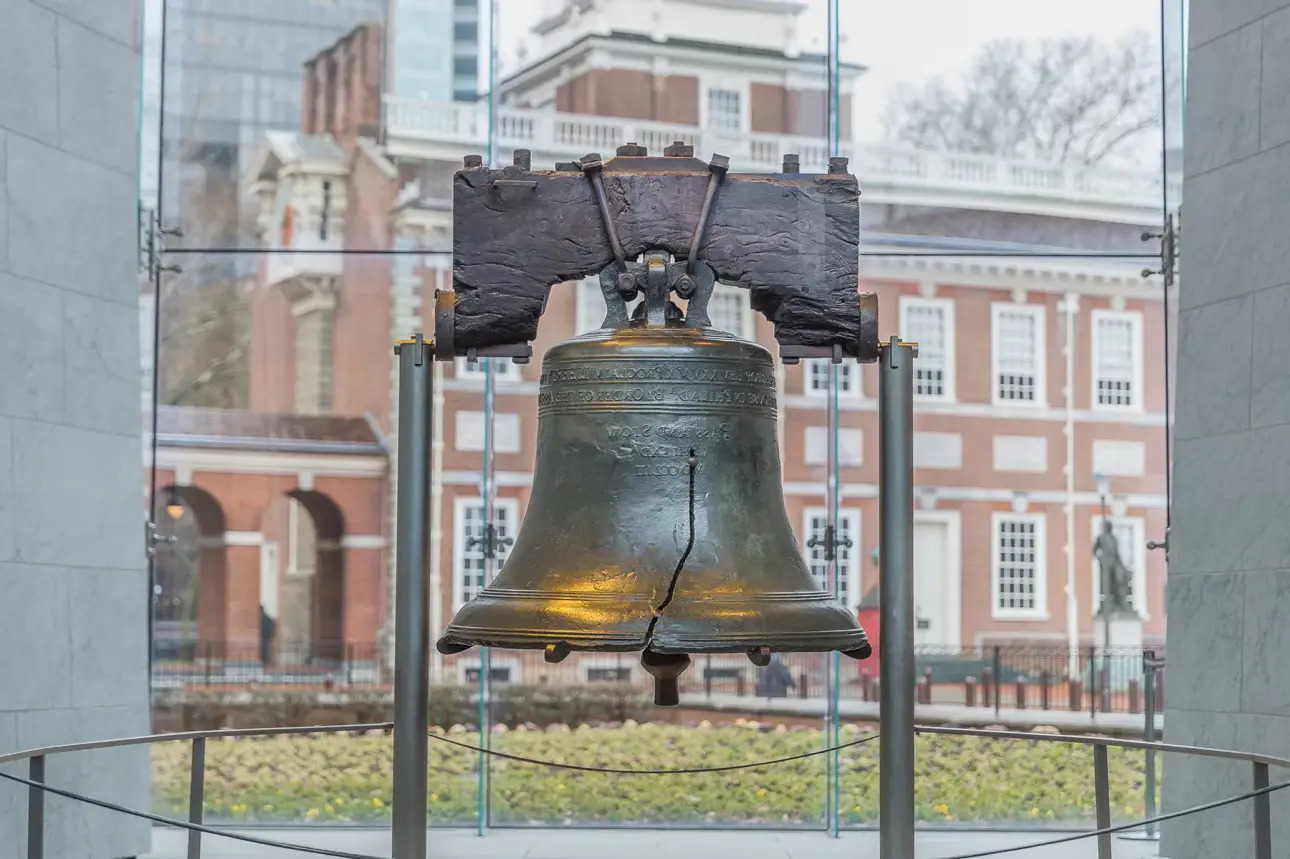
Did you know the Liberty Bell weighs about 2,080 pounds? This iconic symbol of American independence has a rich history that goes beyond its famous crack. Cast in 1752, the bell has witnessed pivotal moments in U.S. history. It rang to mark the reading of the Declaration of Independence and later became a symbol for the abolitionist movement. Today, it resides in Philadelphia, attracting millions of visitors each year. From its inscription to its journey across the country, the Liberty Bell holds many intriguing stories. Ready to learn more? Let's dive into 27 fascinating facts about this legendary artifact.
The Liberty Bell: An Icon of American Independence
The Liberty Bell stands as a powerful symbol of American freedom and independence. Its history is rich, and its significance is profound. Here are some fascinating facts about this iconic bell.
- The Liberty Bell was originally cast in 1752 in London, England.
- It was commissioned by the Pennsylvania Provincial Assembly for the new State House, now known as Independence Hall.
- The bell cracked on its very first test ring.
- It was recast twice in Philadelphia by local founders John Pass and John Stow.
- The bell weighs approximately 2,080 pounds.
- It is made of 70% copper, 20% tin, and small amounts of lead, zinc, arsenic, gold, and silver.
- The inscription on the bell reads, "Proclaim LIBERTY Throughout all the Land unto all the Inhabitants Thereof Lev. XXV. v X."
- The bell was used to summon lawmakers to legislative sessions and to alert citizens to public meetings and proclamations.
- It became a symbol of American independence during the Revolutionary War.
- The bell was hidden in the floorboards of the Zion Reformed Church in Allentown, Pennsylvania, to protect it from the British during the war.
The Bell's Journey and Symbolism
The journey of the Liberty Bell from a functional object to a national symbol is intriguing. Its symbolism has evolved over time, reflecting the changing values and struggles of the nation.
- The bell was rung on July 8, 1776, to mark the first public reading of the Declaration of Independence.
- It was not called the "Liberty Bell" until the 1830s when it became a symbol of the abolitionist movement.
- The bell traveled to various cities in the late 19th and early 20th centuries to promote national unity.
- It was last rung on George Washington's birthday in 1846, when it cracked irreparably.
- The crack in the bell is approximately 24.5 inches long.
- The bell's clapper is still intact but is no longer used to strike the bell.
- The bell is housed in the Liberty Bell Center in Philadelphia, where it is visited by millions of people each year.
- The bell's image has been used on coins, stamps, and various memorabilia.
- It has inspired numerous replicas, including one in the White House and another at the United Nations Headquarters in New York City.
The Bell's Cultural Impact
The Liberty Bell has left an indelible mark on American culture. Its image and symbolism continue to resonate with people across the country and around the world.
- The bell was featured in the 1976 Bicentennial celebration, symbolizing 200 years of American independence.
- It has appeared in various films, books, and television shows, often representing freedom and justice.
- The bell's image is used by the National Park Service as part of its logo.
- It has been a focal point for civil rights movements, including Martin Luther King Jr.'s "I Have a Dream" speech.
- The bell's symbolism extends beyond the United States, representing universal ideals of liberty and human rights.
- The Liberty Bell Foundation was established to preserve and promote the bell's history and significance.
- The bell's story is taught in schools across the nation, ensuring that future generations understand its importance.
- The Liberty Bell remains a powerful reminder of the enduring struggle for freedom and equality.
Liberty Bell's Legacy
The Liberty Bell stands as a powerful symbol of freedom and independence. Its crack and history tell a story of resilience and hope. From its origins in 1752 to its role in American history, the Bell has witnessed significant events. It reminds us of the struggles and triumphs of a nation. Today, millions visit the Liberty Bell Center to see this iconic piece of history. Its inscription, "Proclaim LIBERTY Throughout all the Land unto all the Inhabitants Thereof," continues to inspire. The Bell's journey from Philadelphia to various cities during the Revolutionary War highlights its importance. Despite its crack, the Liberty Bell's message remains clear. It’s a testament to the enduring spirit of liberty. Whether you're a history buff or just curious, the Liberty Bell offers a glimpse into America's past and its ongoing quest for freedom.
Was this page helpful?
Our commitment to delivering trustworthy and engaging content is at the heart of what we do. Each fact on our site is contributed by real users like you, bringing a wealth of diverse insights and information. To ensure the highest standards of accuracy and reliability, our dedicated editors meticulously review each submission. This process guarantees that the facts we share are not only fascinating but also credible. Trust in our commitment to quality and authenticity as you explore and learn with us.


